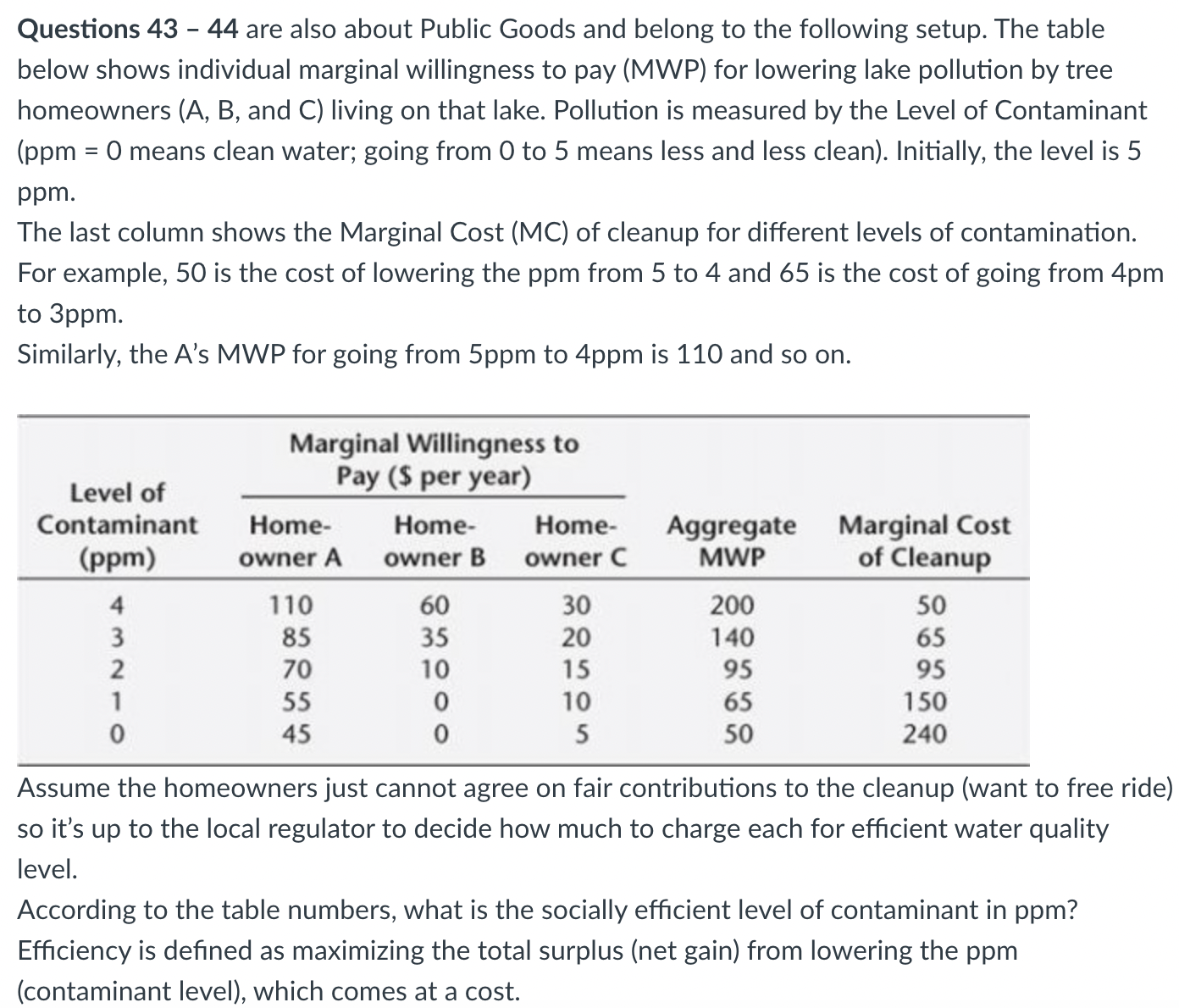Question
Questions 43 - 44 are also about Public Goods and belong to the following setup. The table below shows individual marginal willingness to pay (MWP)
Questions 43 - 44 are also about Public Goods and belong to the following setup. The table below shows individual marginal willingness to pay (MWP) for lowering lake pollution by tree homeowners (
A,B, and C) living on that lake. Pollution is measured by the Level of Contaminant (ppm
=0means clean water; going from 0 to 5 means less and less clean). Initially, the level is 5 ppm.\ The last column shows the Marginal Cost (MC) of cleanup for different levels of contamination. For example, 50 is the cost of lowering the ppm from 5 to 4 and 65 is the cost of going from
4pmto
3ppm.\ Similarly, the A's MWP for going from
5ppmto
4ppmis 110 and so on.\ \\\\table[[\\\\table[[Marginal Willingness to],[Pay ($ per year)]],,,,,],[\\\\table[[Home-],[owner A]],\\\\table[[Home-],[owner B]],\\\\table[[Home-],[owner C]],\\\\table[[Aggregate],[MWP]],\\\\table[[Marginal Cost],[of Cleanup]]],[110,60,30,200,50],[85,35,20,140,65],[70,10,15,95,95],[1,55,0,10,65,150],[0,45,0,5,50,240]]\ Assume the homeowners just cannot agree on fair contributions to the cleanup (want to free ride) so it's up to the local regulator to decide how much to charge each for efficient water quality level.\ According to the table numbers, what is the socially efficient level of contaminant in ppm?\ Efficiency is defined as maximizing the total surplus (net gain) from lowering the ppm (contaminant level), which comes at a cost.

Step by Step Solution
There are 3 Steps involved in it
Step: 1

Get Instant Access to Expert-Tailored Solutions
See step-by-step solutions with expert insights and AI powered tools for academic success
Step: 2

Step: 3

Ace Your Homework with AI
Get the answers you need in no time with our AI-driven, step-by-step assistance
Get Started


